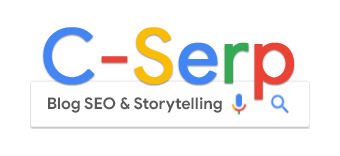The ROAS illusion: Rethinking what Google Ads success looks like

Return on ad spend (ROAS) has been the default metric for evaluating Google Ads performance for years.
It’s easy to calculate, works well with automated bidding, and provides a quick snapshot of efficiency.
However, as ad costs rise and tracking becomes less reliable, relying solely on ROAS is no longer enough, especially for businesses focused on long-term growth and profitability.
This article:
- Unpacks why ROAS can be misleading.
- Introduces better metrics to consider.
- Explains how to start moving toward a performance strategy that aligns with real business outcomes.
Why ROAS can be misleading
ROAS seems like the perfect metric. Spend $1, make $5.
It’s clean, quantifiable, and easy to explain to stakeholders.
But the simplicity hides some big problems.
ROAS doesn’t account for profit margins
Take a skincare brand with a 600% ROAS.
Sounds great, right?
But if their best-selling product only has a 10% profit margin, that return suddenly doesn’t look so strong.
Once you factor in costs of goods, shipping, returns, discounts, and marketing overhead, there might not be much left in the bank.
ROAS tells you how much revenue you made, not how much money you actually earned.
It favors short-term, low-risk campaigns
ROAS tends to look best when campaigns are focused on retargeting, branded search, or people already close to converting.
These campaigns might be efficient, but they aren’t driving new growth.
If most of your budget goes toward people who would’ve bought anyway, your performance numbers might look good, but your pipeline will eventually dry up.
It can inflate results that would have happened anyway
Branded search campaigns almost always show high ROAS.
But how many of those conversions would have happened without the ad?
If someone searches your exact brand name and clicks your ad instead of the organic result, you haven’t gained anything – you’ve just paid for a conversion that was already on its way.
3 alternative metrics that align ad spend with business outcomes
ROAS was built for a simpler time.
Today’s ad environment demands sharper tools.
These alternative metrics go deeper, helping you measure real business value – not just platform performance.
1. Profit per impression (PPI)
What it is
Profit per impression looks at how much profit each impression generates.
It’s especially useful for top-of-funnel campaigns where clicks and conversions are lower, but influence can still be high.
Example
A DTC mattress brand runs YouTube ads to promote a new eco-friendly line.
CTRs are low and ROAS isn’t impressive in-platform.
But over the next two weeks, the brand sees a spike in high-margin product sales.
When they tie those sales back to the impressions and calculate the profit per ad view, they realize this campaign outperformed many of their search efforts, even though traditional metrics said otherwise.
Why it matters
PPI gives you a way to measure profitability at the brand awareness level.
It encourages you to think about efficient reach, not just clicks.
And it’s a better fit for platforms and formats where direct conversions aren’t the whole story, like YouTube or Display.
2. Customer lifetime value (CLV)
What it is
CLV looks beyond the first purchase and estimates how much revenue a customer will generate over time.
It’s essential for subscription brands, businesses with strong repeat purchase behavior, or anyone thinking long-term.
Example
A subscription meal kit service acquires two customers:
- Customer A signs up via a brand search ad. They cancel after one month.
- Customer B signs up from a generic recipe keyword and stays for eight months.
Customer A had a lower CPA and better immediate ROAS. But Customer B ends up being worth eight times more.
If you’re only looking at ROAS, you’ll end up optimizing for more Customer As.
How to use it
Segment high-value customers using GA4, your CRM, or analytics tools.
Import those customer lists into Google Ads via Customer Match, or send offline conversion values into your account.
Then use value-based bidding to steer spend toward audiences that bring more value over time, not just quick wins.
3. Incrementality
What it is
Incrementality tells you how many conversions happened because of your ads – not just those that happened with your ads.
It’s about isolating the true impact of your campaigns, which ROAS doesn’t do at all.
Example
An eyewear brand runs Performance Max campaigns alongside branded search. They test two regions:
- In Region A, they pause Performance Max.
- In Region B, they leave it running.
Both regions have similar brand awareness.
After a few weeks, Region B shows 20% more total conversions, even though ROAS is lower.
That 20% lift shows the campaign is actually driving new business – not just picking up conversions that would’ve happened anyway.
Tools and tactics to test incrementality
- Geo-based holdout tests using Google Experiments or manual setups.
- Google’s Conversion Lift studies (if eligible).
- Media mix modeling with tools like Northbeam or Rockerbox.
- Compare brand keyword performance across paid vs. organic using Search Console data.
Dig deeper: Incrementality testing in advertising – Who are the winners and losers?
From ROAS to value: Evolving your bidding strategy
Google’s automation can be incredibly effective, but only if it’s optimizing for the right outcomes.
If you’re feeding the system shallow goals like page views or “add to cart” events, don’t be surprised when your campaigns prioritize low-quality actions.
Here’s how to start shifting your bidding and tracking strategy toward real value.
Define success by business impact, not just ad metrics
Are you trying to acquire new customers, increase profit per order, or attract high-LTV segments?
Be clear on what success actually looks like and make sure your campaign goals reflect that.
Bring in better data
Use Enhanced Conversions to send more accurate signals.
Push offline conversion events like closed deals or retained customers back into Google Ads.
If your value data stays in your CRM, Google can’t optimize for it.
3. Use conversion value rules
Adjust conversion values based on audience type, location, or device.
For example, you might want to increase the value of conversions from repeat customers or loyalty program members.
Test broad match with value-based bidding
When paired with good first-party data and well-defined goals, broad match and value bidding can help you scale beyond narrow keyword targeting, without sacrificing efficiency.
Final thoughts
ROAS still has a place in your reporting stack.
But it shouldn’t be the only metric guiding your decisions.
By introducing metrics like profit per impression, customer lifetime value, and incrementality, you can build a performance model that reflects the real value your campaigns are driving.
The advertisers seeing the biggest gains in 2025 aren’t just chasing higher ROAS – they’re building smarter, more sustainable strategies focused on growth, profit, and long-term success.
Dig deeper: How to optimize for ROAS in Google Ads using LTV insights


